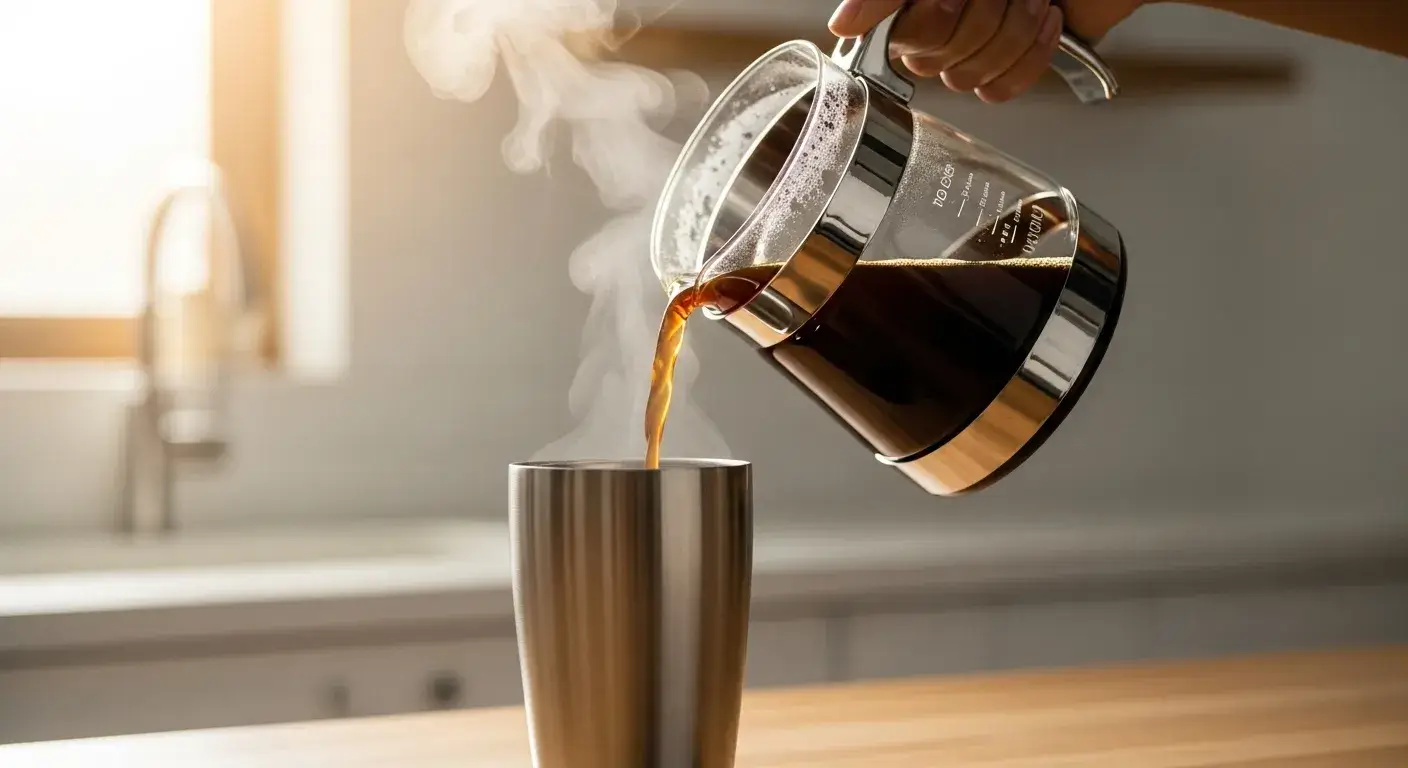
Coffee lovers are embracing stainless steel tumblers more than ever—but is it really safe, smart, and good for taste?
Yes, stainless steel tumblers are safe for coffee. With proper cleaning and quality material, they preserve flavor and temperature without harmful reactions.
Here's how to make sure your tumbler works with your coffee—not against it.
Is It Safe to Put Hot or Iced Coffee in a Stainless Steel Tumbler?
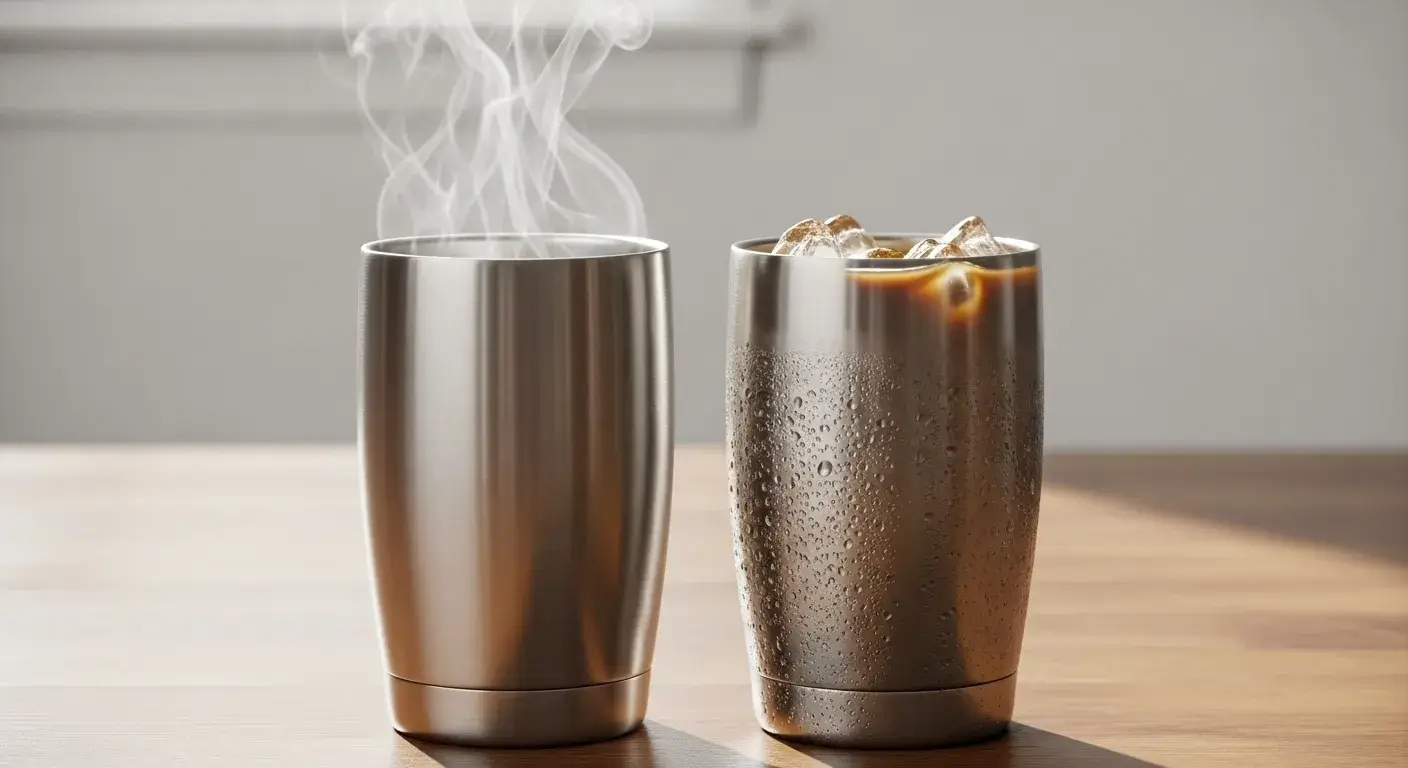
Coffee is acidic. Steel is metal. Sounds risky, right? Not if you're using the right type.
Stainless steel tumblers made from food-grade materials like 3041 are fully safe for hot or iced coffee and approved by global food safety standards.
What the Science Says
Stainless steel is considered non-reactive, meaning it won't leach harmful chemicals into mildly acidic liquids like coffee2. Here's how it performs:
| Use Case | Safety Verdict | Notes |
|---|---|---|
| Hot Coffee (90–100°C) | ✅ Safe | No leaching or odor |
| Iced Coffee (0–10°C) | ✅ Safe | Excellent cold retention |
| Long Storage (>24 hrs) | ⚠ Not recommended | Bacterial risk if unwashed |
At Sibottle, we only use certified 304 or 316 stainless steel to ensure our tumblers are safe for daily coffee use—even for the most passionate drinkers.
Does Stainless Steel Affect the Taste of Your Coffee?
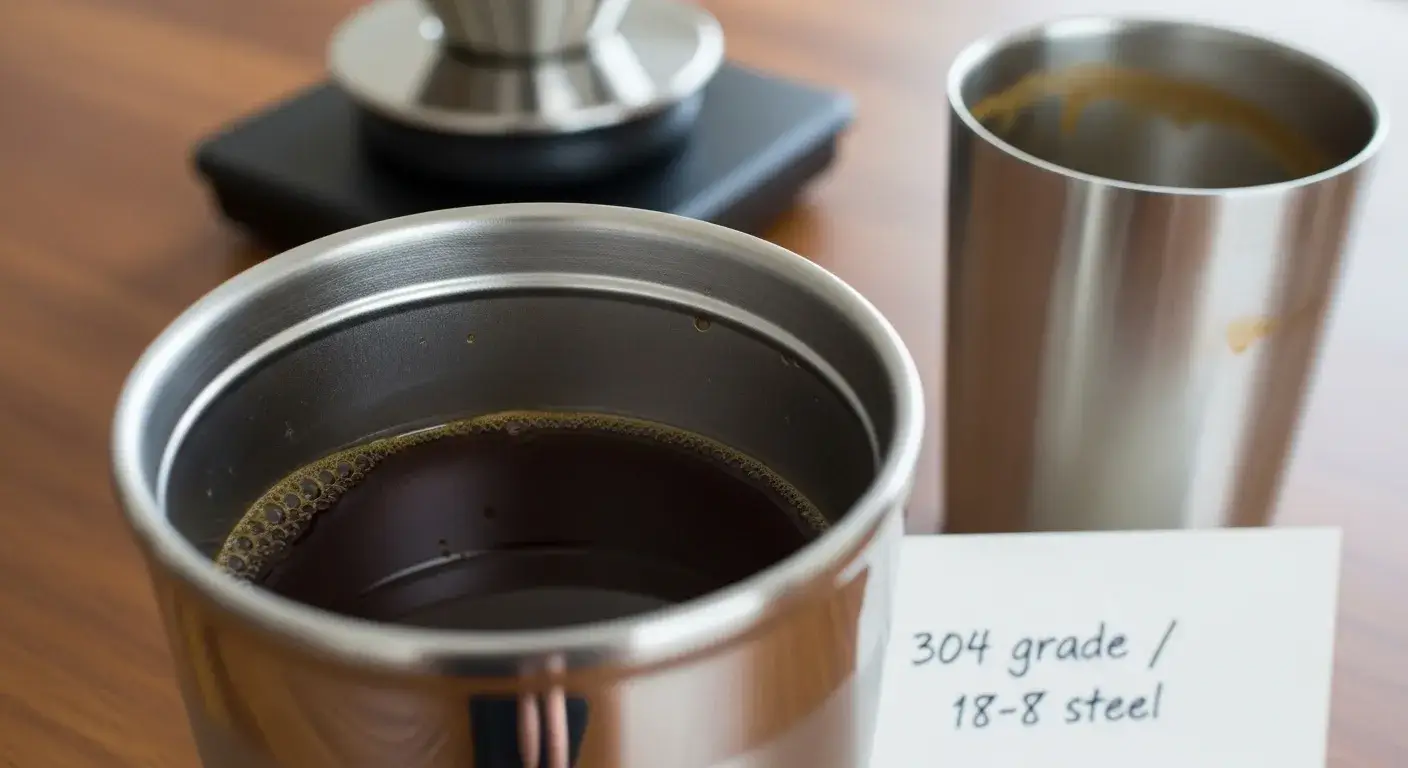
Some people say coffee tastes "off" in metal cups. But is it true?
High-quality stainless steel does not change the flavor of coffee—but poor finishes or leftover oils can create a metallic taste.
Flavor Factors to Consider
- Surface Finish: Polished interiors resist oil buildup, while rough ones retain residues.
- Cleanliness: Coffee oils left behind can oxidize, adding stale or sour notes.
- Material Quality: Lower grades like 201 may impart metallic tastes over time.
"I thought my tumbler was the problem—turned out I just needed to clean it better. The metallic taste disappeared overnight."
| Issue | Taste Impact | Fix |
|---|---|---|
| Unwashed oils | High | Rinse immediately after use |
| Cheap steel (201 grade) | Moderate | Use 304 or 316 grade only |
| Rough interior texture | Low | Choose electropolished tumbler |
What Type of Stainless Steel Is Best for Coffee Tumblers?
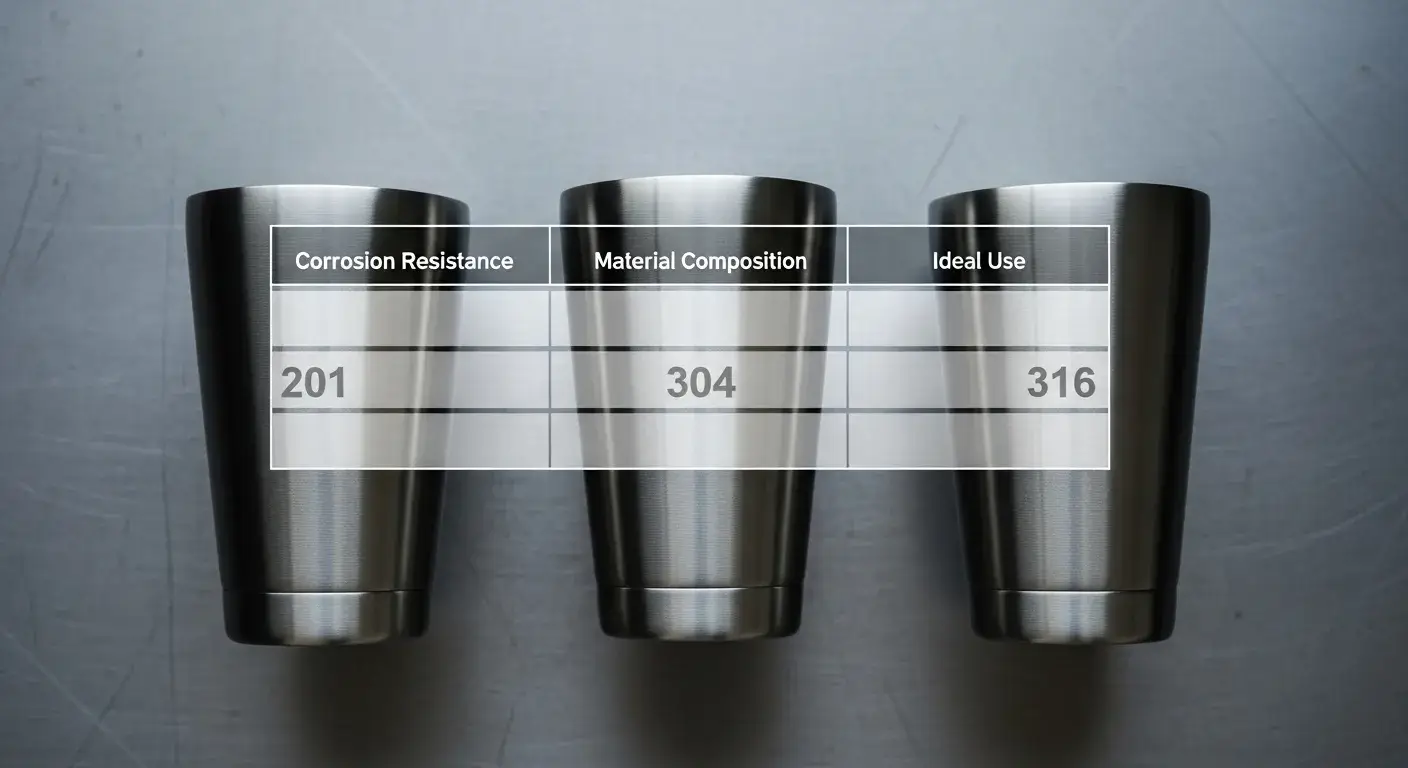
Not all stainless steel is created equal. Your coffee deserves the best.
304 stainless steel (also called 18/8) is the standard for coffee tumblers due to its resistance to acid, heat, and corrosion.
How to Spot the Right Grade
| Grade | Composition | Rust Resistance | Ideal Use |
|---|---|---|---|
| 201 | Low nickel, high manganese | Low | Budgetware—not for coffee |
| 304 | 18% Cr / 8% Ni | High | Everyday coffee/tea |
| 316 | Adds 2% molybdenum | Very High | Espresso, citrus, or marine use |
Look for markings like "18/8" or "304" on the bottom of your cup. Also, avoid painted interiors—they can flake over time and alter flavor.
How Do You Clean a Stainless Steel Tumbler After Coffee Use?
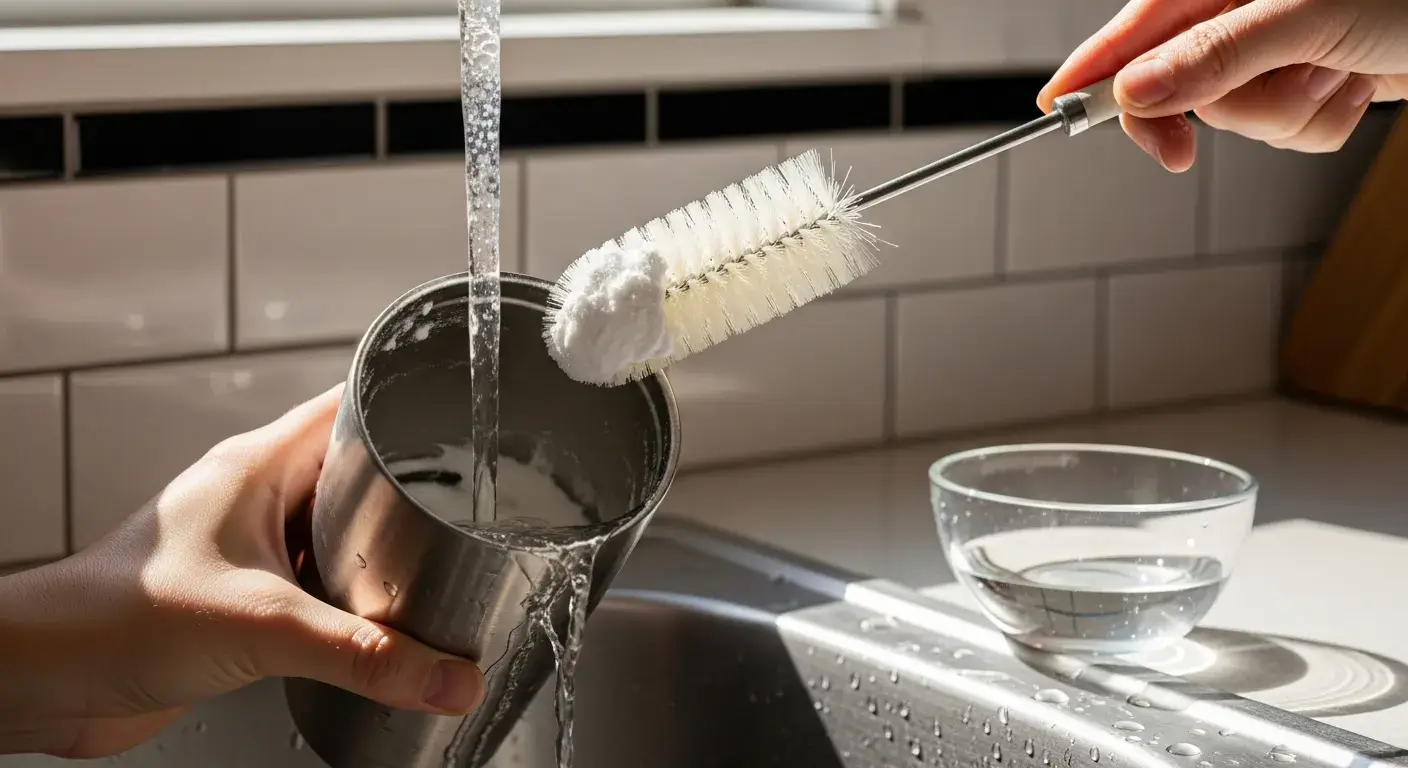
A clean tumbler is a flavorful tumbler. Leftover coffee residue causes bitterness and stains.
Rinse your tumbler immediately after use and deep-clean weekly with gentle, natural ingredients like baking soda3 to keep it tasting fresh.
Cleaning Tips That Work
- Daily: Rinse with warm water right after finishing your coffee
- Weekly: Use baking soda paste or vinegar soak to remove oils
- Deep Clean: Add rice and water, shake for 30 seconds to scrub unreachable areas
- Avoid: Bleach, strong detergents, or steel wool (they damage the protective layer)
| Method | Recipe | Frequency |
|---|---|---|
| Baking Soda Paste | 1 tbsp + water, scrub | Weekly |
| Vinegar Soak | 1:1 vinegar and water, 10 mins | Bi-weekly |
| Rice Shake | 1 tbsp rice + water, shake | Monthly |
After I started using the baking soda trick every Sunday, my tumbler stopped smelling like old espresso—even after dark roasts.
What Are the Pros and Cons of Using Tumblers for Coffee on the Go?
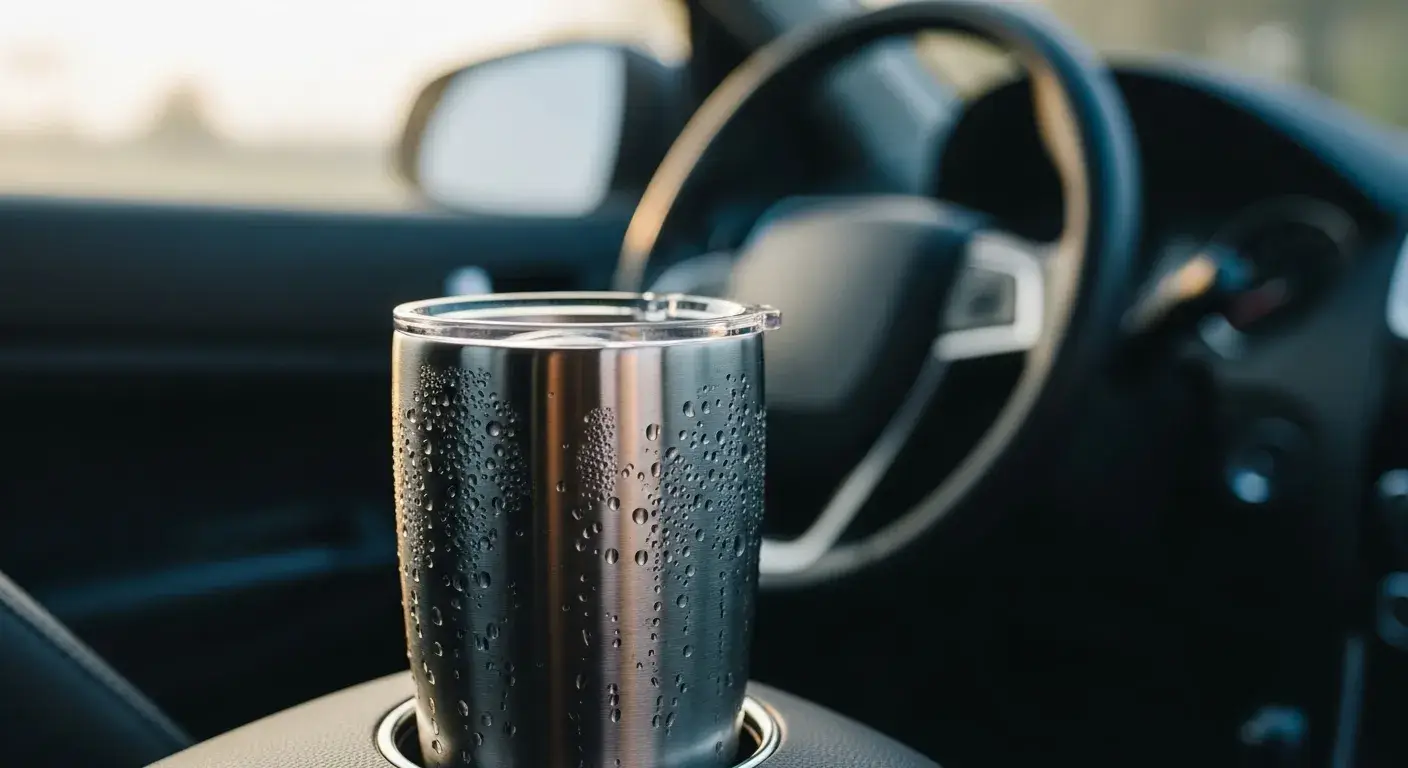
Reusable tumblers are everywhere in 2025—but do they actually improve your coffee experience?
Stainless steel tumblers are durable, temperature-stable, and eco-friendly—but require regular care for best results.
Pros and Cons Breakdown
| Pros | Cons |
|---|---|
| Keeps coffee hot 6–8 hours4 | Needs hand washing after each use |
| Reduces single-use cup waste5 | Slightly heavier than paper/plastic |
| BPA-free, non-leaching6 | Poorly sealed lids may leak |
| Withstands drops and dents | Can retain smells if neglected |
For daily commuters like me, the insulation and spill-proof lids make a huge difference—especially during long winter drives.
What Common Mistakes Should You Avoid When Storing Coffee in Stainless Steel?
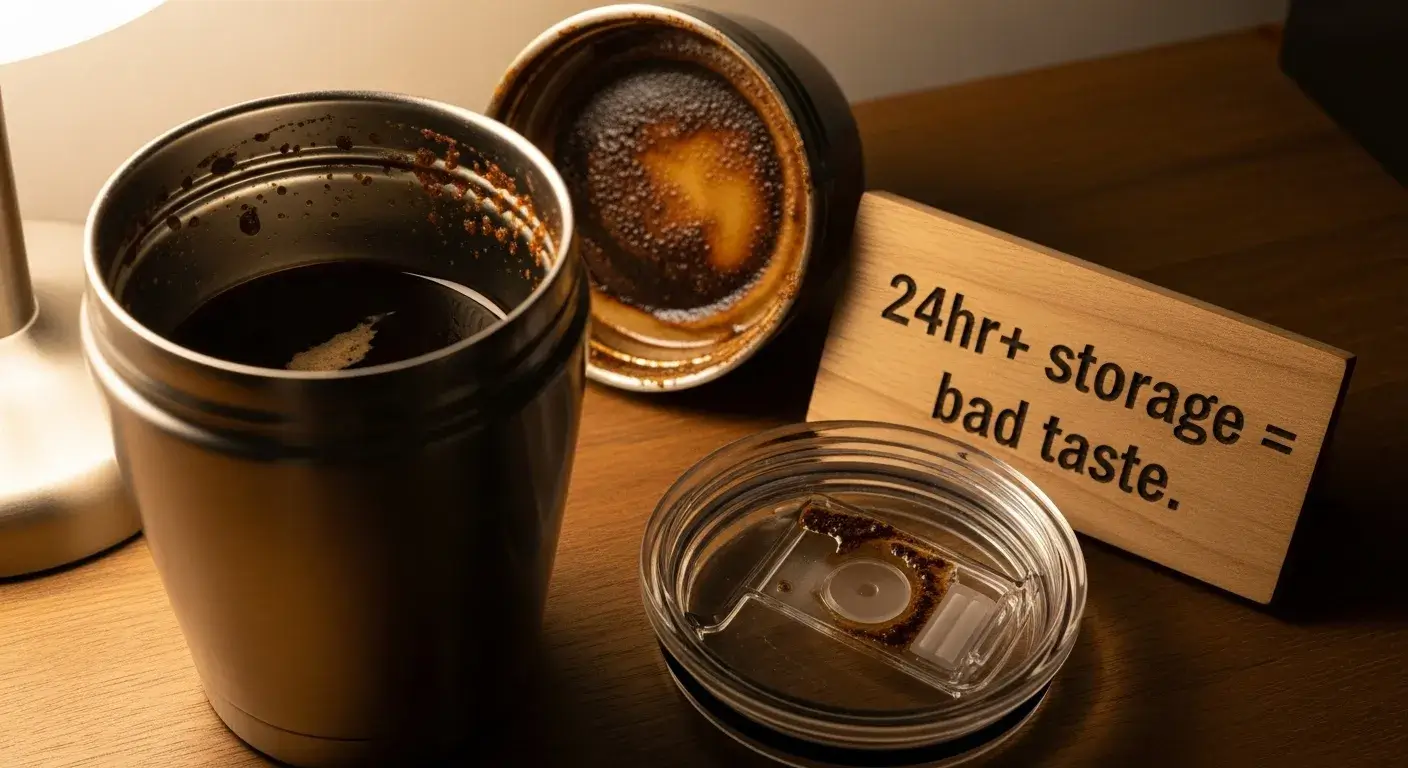
Even with great materials, small mistakes can ruin your coffee—or your tumbler.
Avoid overfilling, storing coffee too long, or skipping post-use cleaning to keep your tumbler safe and effective.
Mistakes to Watch For
- Leaving coffee overnight: Encourages bacteria and flavor degradation
- Using abrasive sponges: Scratches surface, traps oils
- Microwaving your tumbler: Destroys insulation and warps shape
- Not drying fully: Moisture can cause surface spots or rust in cheap tumblers
| Mistake | Consequence | Quick Fix |
|---|---|---|
| Coffee left >24 hrs | Off taste, bacteria | Pour out and rinse ASAP |
| Dirty seal/lid | Leaks, smells | Remove and clean weekly |
| Scratched interior | Traps oils, alters flavor | Use only soft sponges |
With simple habits, your stainless steel coffee tumbler can last 5–10 years—and still make every brew taste fresh.
Conclusion
Yes, coffee and stainless steel tumblers go perfectly together—if you choose the right grade and take care of it properly.
FAQs
Can you put coffee in a stainless steel tumbler?
Yes, it's safe for both hot and iced coffee if made with food-grade 304 or 316 stainless steel.
Does stainless steel affect coffee flavor?
Only if it's dirty or low-quality. Clean, polished stainless steel keeps flavors neutral.
What grade of stainless steel is best for coffee?
304 (18/8) is standard. 316 is better for acidic drinks like espresso or citrus.
Can I store coffee in a stainless steel tumbler overnight?
It's safe, but not ideal. Oils and residue can spoil the taste and encourage bacteria.
How long will coffee stay hot in a stainless steel tumbler?
In a vacuum-insulated tumbler, 6–8 hours hot or 12–24 hours iced—depending on lid quality.
How do I clean coffee stains out of a tumbler?
Use baking soda paste, vinegar soak, or rice shake method. Avoid bleach or steel wool.
Can I put my tumbler in the dishwasher?
Only if labeled dishwasher-safe. Top rack only, with mild detergent.
Why does my coffee taste metallic in my tumbler?
Usually from residue buildup or low-grade steel. Clean thoroughly or upgrade quality.
Is it safe to drink coffee from metal every day?
Yes, food-grade stainless steel is non-leaching and approved for daily hot beverage use.
Will stainless steel make iced coffee taste different?
No—if anything, it keeps it colder and crisper than plastic or glass.
-
Learn about FDA, NSF, and ANSI approval standards for food-grade stainless steel, including the minimum 16% chromium content requirement that makes 304 stainless steel safe for coffee and food contact applications. ↩
-
Discover the scientific research on organic acids in coffee, including pH levels (typically 4.5-5.0), chemical composition of chlorogenic acids, citric acid, and malic acid, and how they interact with stainless steel surfaces. ↩
-
Find detailed cleaning methods using baking soda, vinegar, and other natural household ingredients to remove coffee stains and oils from stainless steel without damaging the protective surface layer. ↩
-
Understand the science behind double-wall vacuum insulation technology and how it keeps hot drinks at 115°F+ for 6-8 hours and cold drinks below 40°F for 12+ hours through conduction, convection, and radiation prevention. ↩
-
Explore environmental data showing that reusable tumblers can save 52,000 tonnes of CO2e annually in the UK alone, prevent 300+ disposable cups per person from entering landfills yearly, and reduce carbon emissions by 69% compared to single-use cups. ↩
-
Learn why BPA-free stainless steel is safer than plastic containers, how BPA can disrupt the endocrine system and cause reproductive issues, and why food-grade stainless steel naturally prevents chemical leaching into beverages. ↩

